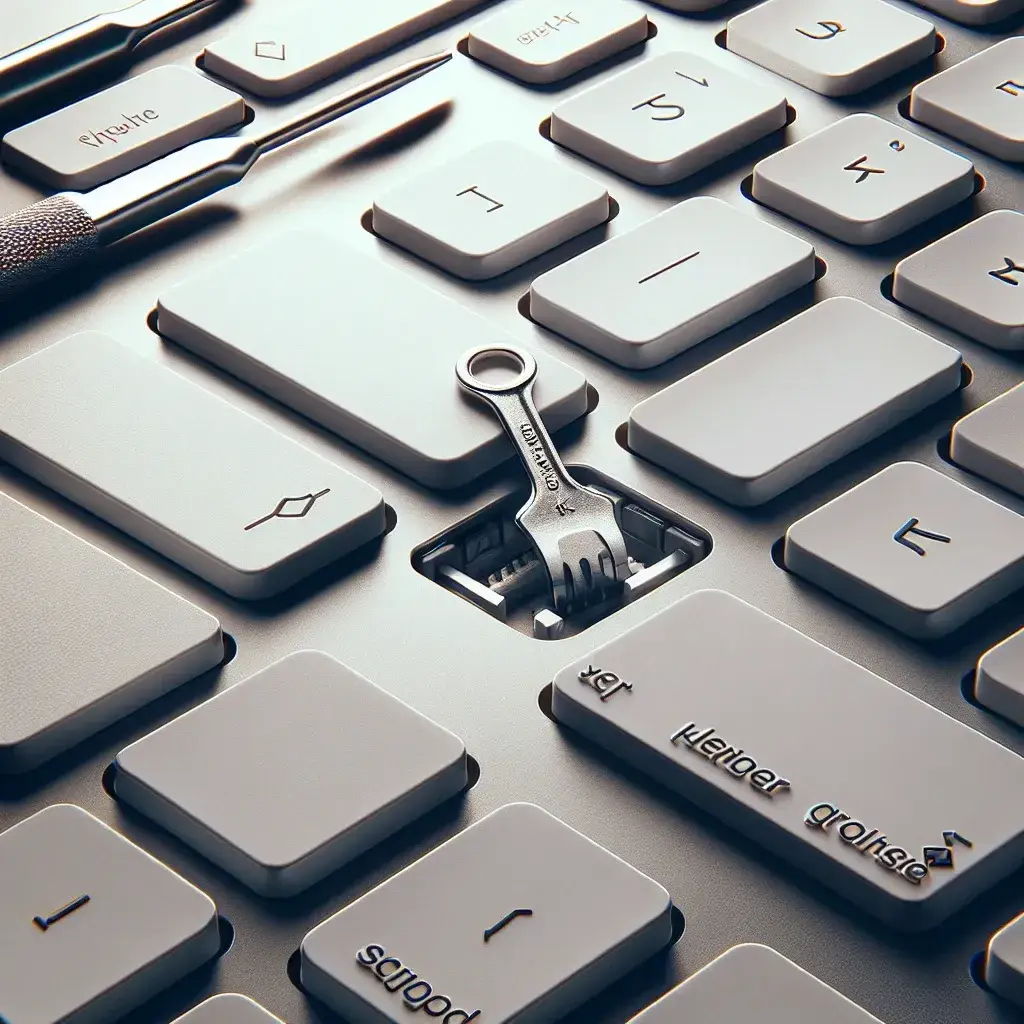A stuck keyboard key can disrupt your workflow, causing frustration and decreasing productivity. Whether you need to unstick a key on your computer or laptop, understanding how to resolve this issue effectively is crucial. This guide covers the necessary steps to get your keyboard back in working order.
Common Causes of Stuck Keyboard Keys
- Debris or dirt accumulations
- Moisture or liquid spills
- Broken or misaligned mechanisms
- Wear and tear
Identifying the cause of the stuck key is the first step toward fixing it. Let’s explore how each cause can be addressed:
Debris or Dirt Accumulations
Dust and tiny particles can get under your keyboard keys, making them feel sticky or unresponsive. This issue is common with both laptops and desktop keyboards.
| Method | Description |
|---|---|
| Compressed Air | Use a can of compressed air to blow out any debris underneath the keys. |
| Soft Brush | Utilize a soft-bristled brush to gently remove dirt. |
Moisture or Liquid Spills
Spills can cause keys to stick by making their underlying components wet or greasy. Quickly addressing spills can prevent long-term damage.
Steps to Fix Moisture Issues
- Turn off the keyboard or laptop immediately.
- Shake out as much liquid as possible.
- Leave the device in an upside-down position to air dry.
- If possible, remove the affected keys and clean them with isopropyl alcohol.
Broken or Misaligned Mechanisms
Sometimes, keys become stuck because their underlying mechanisms are broken or out of alignment. This issue might require in-depth disassembly or professional assistance.
Steps for Mechanical Issues
- Check if the keycap is misaligned and gently press it back into place.
- If the key is broken, consider replacing the keycap or the entire keyboard mechanism.
- For laptops, refer to the user manual for disassembly instructions.
- Contact a professional if unsure about fixing it yourself.
Wear and Tear
Over time, keyboard keys can wear out, making them stick or become unresponsive.
Steps for Wear and Tear
- Regularly clean your keyboard to prevent debris buildup.
- Replace worn-out keys or keycaps as needed.
- Consider investing in a higher-quality keyboard if the issue persists.
Preventive Measures
Preventive maintenance can keep your keyboard keys from sticking:
Keep Your Keyboard Clean
- Regularly dust your keyboard using compressed air.
- Avoid eating or drinking near your computer or laptop.
- Use keyboard covers to protect against spills and debris.
Avoid Excessive Force
- Press keys gently to avoid damaging them.
- Encourage proper typing techniques to reduce wear and tear.
Monitor for Issues
- Regularly inspect your keyboard for stuck or missing keys.
- Address issues immediately to prevent further damage.
By following these guidelines, you can effectively unstick keyboard keys and prevent future occurrences, ensuring a smooth and efficient typing experience.

